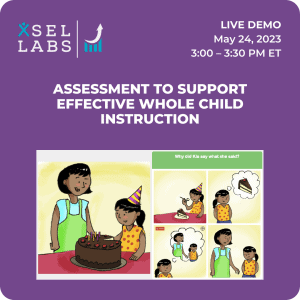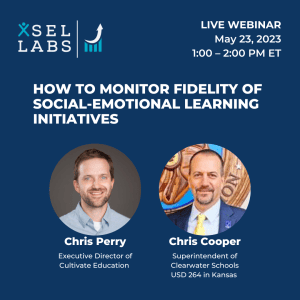My colleagues and I think a lot about how to use SEL assessment data for continuous improvement to make life better for teachers and the kids they serve, and for researchers who care about student social-emotional outcomes. And so it’s not a surprise that, a few weeks ago, I picked up a terrific book on continuous improvement called Learning to Improve: How America’s Schools Can Get Better at Getting Better by Anthony Bryk and colleagues.
Here’s a brief summary: Done wisely, it is possible to use data in rapid improvement cycles to diagnose educational problems, develop a plan for addressing them, collect more data, re-diagnose, make mid-course corrections, etc. leading to a virtuous cycle of data use and improved effectiveness in all kinds of practice areas.
The book is clear, powerful, inspirational even.
In reflecting on this terrific book, I asked myself what it would take to mount a successful iterative continuous improvement effort like the ones Bryk and his colleagues described in real schools with the goal of improving student social and emotional outcomes.
I have to admit, I got a little stuck. It struck me that what the book described was clear and powerful in the hands of a masterful practitioner of continuous improvement.
Spoiler Alert: Fighting without Fighting is Hard
Then my mind drifted, naturally, to Bruce Lee. Yes, THAT Bruce Lee—martial arts genius and hero to boys who grew up in the 70s.
In interviews about martial arts, Bruce Lee rejected the idea of combat “techniques,” arguing that the reliance on fixed movements interfered with the natural flow of combat, which required quickly reading the situation, improvisation, and efficient movements. He called his own style of martial art, “fighting without fighting.”
Bruce Lee could pull off being a larger-than-life martial artist while rejecting fixed patterns and techniques probably because he had worked hard his whole life, including in traditional martial arts schools (where he studied techniques!) until he transcended technique.
Bryk and colleagues are, I believe, the Bruce Lees of continuous improvement. Just swap “data cycles” for “combat” and they’re virtually indistinguishable. Bryk and colleagues can enter complex systems, quickly take stock of the political and organizational complexities, develop elegant data systems and rapid-cycle improvement loops, and respond fluidly and efficiently to make great things happen. Like Bruce Lee, they are masters who have transcended technique.
That leaves the rest of us to figure out what to do with social-emotional assessment data to make things better.
How to Use SEL Assessment to Make Things Better
Despair not. Even mere mortals can use data productively to improve social and emotional teaching and learning. Here are some things within reach of all who want to use social-emotional data to make a difference:
- Be clear about what you want to assess. SEL is a very “big” concept, with lots of sub-components. Spend some time to come to agreement about what you mean by SEL so that your efforts are focused and effective.
- Be clear about your goals in assessing SEL. Do you want to evaluate the effectiveness of a program? Equip teachers with formative assessment about their students? Advance your MTSS program? There are many goals that SEL assessment can advance. To pick the right assessment for you, and use it in a productive way, it is important to be clear about what you want to accomplish.
- Find the right tool for the job. There are terrific teacher rating scales, like Aperture’s DESSA. xSEL Labs offers direct assessment of SEL skills. Others offer self-report questionnaires. Each of these approaches has strengths and weaknesses, and you’d be well-advised to select the assessment tool that measures what you care about and can help you achieve your assessment goal.
- Join with parents. Figure out, before you assess, how you will join with the parent community as partners in this process. What can you do to educate them about your assessment plans, your goals, and how you will use what you learn to make things better? How will you address parent concerns?
- Plan to talk about the data. Once you get clear on steps 1 – 4, and you’ve gone ahead and assessed your students, plan and schedule team meeting to discuss reading, math, and SEL assessment data. Here’s why: assessment reports won’t do anything if no one looks at them. What are the forums for discussion? How will your team review, deliberate over, interpret, and finally, make sense of assessment findings? Do you have existing data review practices? If so, can you add your SEL assessment data so that your teams review reading, math, and SEL? If not, what can you do to bring this discipline to your building
- Finally, think ahead to what you intend to do with what you learn. There are many ways to use SEL data, including investing in an evidence-based SEL program, offering teacher PD on SEL, offering teachers coaching on creating a positive academic, social, and emotional climate, and introducing supplemental lessons to develop skills.
These six steps are simple, but not easy. But I am confident that those who haven’t yet transcended the techniques of continuous improvement, with energy and commitment, can pull off these steps, and in so doing, support teachers to do their very best as they work to nurture student social and emotional development.
If you haven’t already transcended technique, click here to learn more about xSEL Labs assessment offerings. Or drop me a line at cmckown@xsel-labs.com if I can help with any of your assessment needs.



